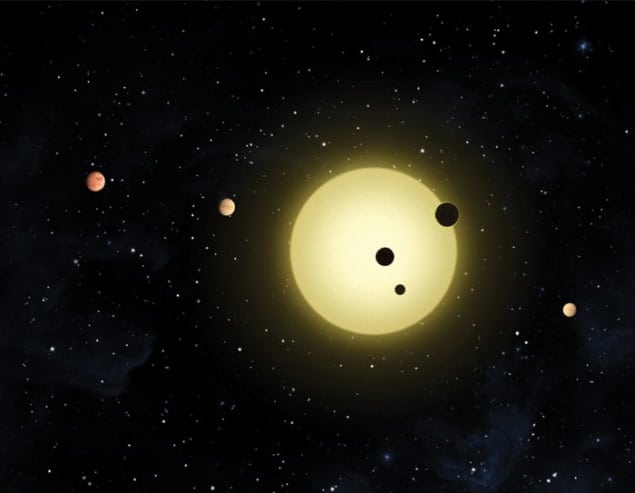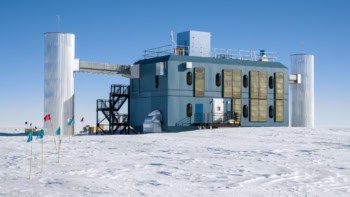Five Billion Years of Solitude: the Search for Life Among the Stars Lee Billings 2013 Current Books £16.88/$27.95hb 294pp

One of the most basic questions, and one that natural philosophers have pondered for many millennia, concerns humanity’s place in the universe: Are we alone? Although the history of this question dates back to the ancient Greeks, and it was surely asked for many years before that, the first inklings of an answer did not come until a few centuries ago, when Copernicus, Kepler, Galileo and Newton demonstrated that other worlds qualitatively similar to our Earth orbit around the Sun. The intellectual revolution they helped bring about transformed the question of life beyond Earth, moving it beyond philosophical and theological musings and making it a subject of scientific investigation. Within the past century, further technological advances have made it possible to investigate the likelihood of extraterrestrial life afresh, using experimental, observational and quantitative theoretical studies that draw on expertise in both the physical and life sciences.
In his book Five Billion Years of Solitude: the Search for Life Among the Stars, Lee Billings describes the quest for answers to this profound question. The book is, first and foremost, a collection of stories, and one that is at least as much about the journey as it is about the destination. The topics covered are extraordinarily diverse, including both modern events and those that occurred long before humans walked the face of Earth, while the protagonists range from modern-day scientists to great minds of centuries and millennia past.
In researching these topics, Billings spent a lot of time with many active scientists – interviewing them, going to meetings and on research trips with them and getting to know them personally. From the spirit of his writings, he clearly enjoyed these experiences, and he has a very engaging style, one that smoothly transitions between the personal stories of active researchers, ancient Greek philosophers and scientists of the Enlightenment.
The search for life beyond our planet is part of a major new interdisciplinary scientific endeavour known as astrobiology. This field encompasses several forms of direct searches for life elsewhere, including those that look for chemical signposts of life (most likely in the form of distinctive gases that simple microbes would produce in the atmosphere of a planet on which they reside) and those that monitor radio frequencies for transmissions that may be emanating from technologically-advanced civilizations. However, many astrobiologists are also interested in researching such topics as the origin and history of life on Earth; the fundamental requirements of life; the environmental extremes that life can tolerate; the interactions of a biosphere with the planet on which it resides; and the traces, or biosignatures, that life produces.
Billings’ stories include elements of many of these astrobiological topics, but the primary focus of his book is the study of extrasolar planets (exoplanets) and what the deep history of our Earth implies for the potential habitability of such worlds. Over the past quarter century, exoplanetology has been transformed from a fraught and less-than-fully-respectable endeavour into one of the most vibrant and visible branches of astronomy. Yet we still cannot answer many basic questions about whether even the most apparently Earth-like of the planets we have found could be suitable for life. For example, we do not know whether terrestrial planets on which liquid water flows are rare, whether they are the norm for solar-type stars or whether they are intermediate in abundance.
The book also includes stories that stem from other areas of scientific inquiry, including a history of the Earth that begins with the seeds of its formation; various topics in astronomy and sedimentary geology; models of planetary atmospheres around stars of different sizes; the conditions needed for a planet to be a habitable abode; and the Search for Extraterrestrial Intelligence (SETI). Billings takes some interesting side trips, including one that shows how the search for extraterrestrial life is entwined with the geological histories of California and Pennsylvania, the gold rush and the oil/gas booms of the late 19th and early 21st centuries. The gold rush, it seems, played a role in the construction of Lick Observatory, where much of the pioneering work searching for exoplanets was done: its patron, James Lick, was a California pioneer who struck it rich in the real estate boom that followed the discovery of gold. And the oil and gas boom is, of course, one of the contributors to climate change, which is threatening our civilization.
Billings has written neither a textbook nor even a science book for a lay audience. There are more direct ways to learn about exoplanets, the history of our planet or astrobiology. Rather, Five Billion Years of Solitude is an engaging story, filled with anecdotes and (often quite colourful) characters from the past as well as the present. It describes scientists, their motivations and how science interacts with the human world. From the story of Lick Observatory to accounts of the great potential (and great cost) of grand government-financed space-based observatories, Billings takes detours that are entertaining and informative. This is a very pleasurable read, and along the way, you’ll learn some science, too.



